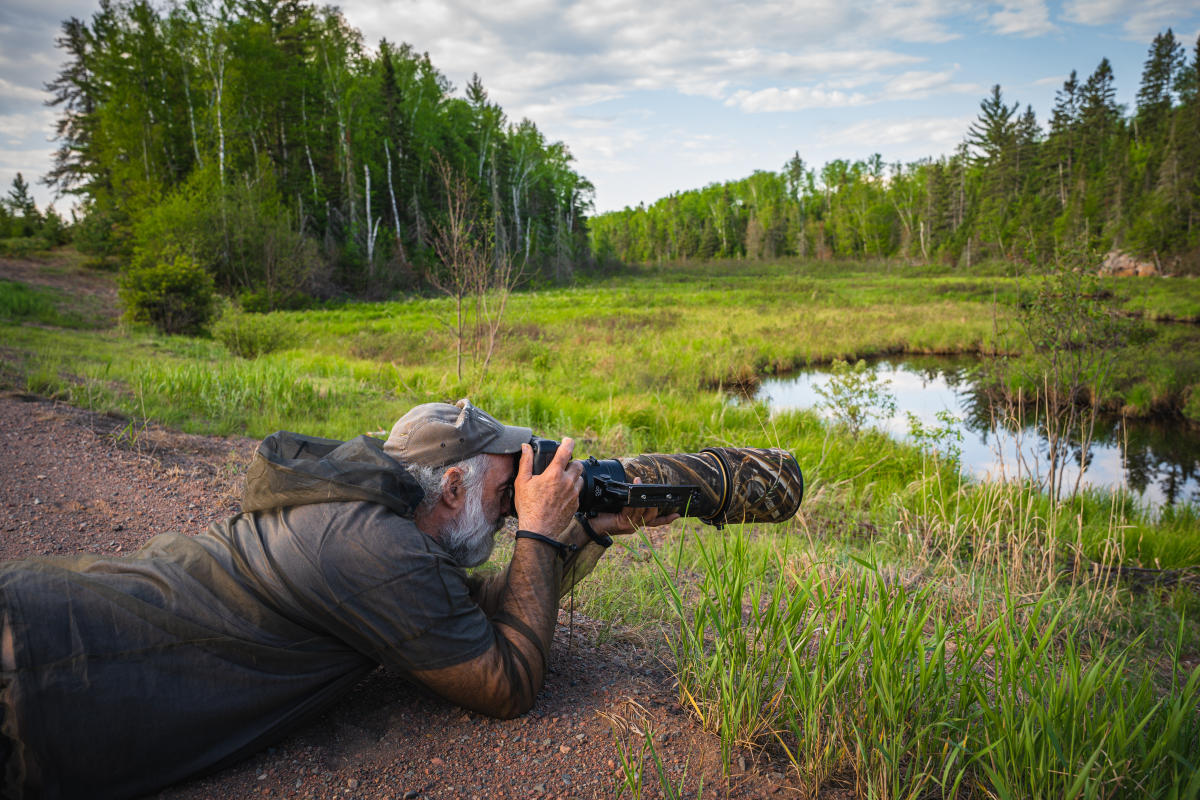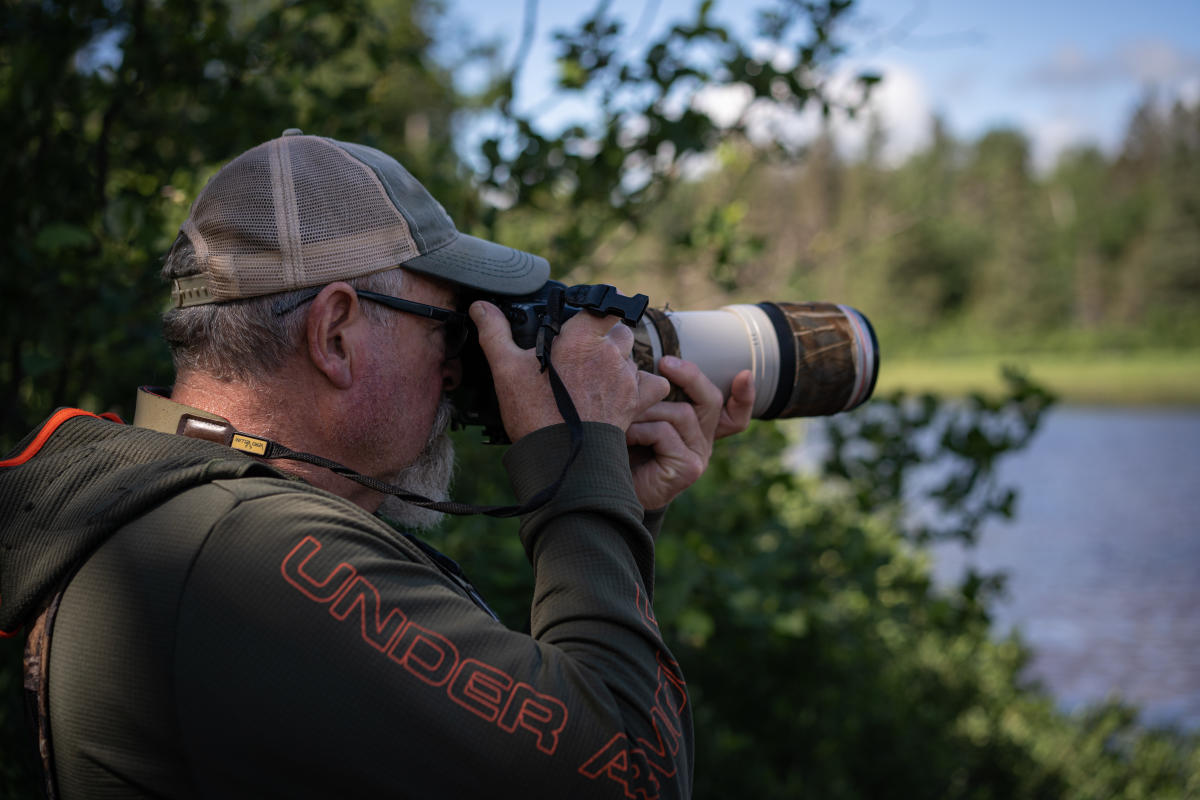Ely, Minnesota, is known for its stunning natural landscapes and abundant outdoor activities, including fishing, boating, canoeing, snowshoeing, camping, and more, which draw a special allure to all who visit our northern haven. Ely also uniquely appeals to professional and amateur photography enthusiasts. Anyone exploring Ely can enhance their experience through the camera lens, encouraging mindfulness and the art of being present. We spoke with two local photographers, Chris Ellerbroek and Jim Schwartz, who highlighted how adopting a photographer's perspective can profoundly enrich any adventure, fostering a deeper connection with the surroundings, regardless of one's professional skill. The only limitations are self-imposed: overthinking, rushing, or impatience. We discussed reasons people should consider photography in our area, and it doesn't always have to do with the amount of wildlife or getting the perfect shot.
Let's Talk About Ely as a Photography Destination:
Although many people want to capture images of moose or lynx, the landscape pictures that people take continue to be breathtaking, drawing others to the Ely area to experience the beauty they see in photos on blogs, websites, or social media. Often, these images are the first thing that introduces people to the Boundary Waters Canoe Area Wilderness and are the motivation to visit our beautiful wilderness. Sometimes, visitors hit the jackpot and capture a picture of one of Ely's elusive animals. Either way, they experience the natural beauty that is the Northwoods, and that is rewarding in itself. Chris and Jim elaborated on how special it can be to get that perfect shot.
Chris: Ely isn't necessarily an easy place to do nature photography. For landscapes, yes, because we have the beautiful wilderness that provides landscape opportunities, but we don't necessarily have Yellowstone's abundance of wildlife. That's like the Serengeti of North America. Ely, actually, is very challenging because you have your real basic stuff–deer and loons. There are plenty of those to shoot, but that's not super interesting or unique (to everyone). Finding what’s unique is a lot more work, but that's part of what excites us as photographers, and that's what attracts photographers to come up here, coming up and finding that moose, that rare encounter. Even owls aren't necessarily rare, but here, it's a challenge to go see them, and when you get back and look at those photos you have taken, you are like, "Man," I got that owl photo and part of the excitement about it is the work it took to get it. That's rewarding. For many photographers, it's the hunt and the chase more than just the image you got.
Jim: When you get the image, and you're like, I got it! That means something because of all the back energy it took to get it. I have a lot of miles on my truck because I was looking for that picture. It's the volume of time you spend getting that one picture, whereas in Yellowstone, you go out, and there's an owl–click, click, click. The reward is greater when you get that picture up here, and we have attractive species. We have the moose, we have the wolf, we have the lynx–you can't find those species everywhere. It just takes education, energy, patience, and luck. But once you get that lynx picture, you're sitting, saying, "I want more!"

Why do you think Ely's elusive wildlife makes it a special place for photography, and what does it take to capture that image?
Jim: In places like Yellowstone, you can get a beautiful picture of a grizzly bear, but hundreds of other people get the same picture. It's much more satisfying. When you get an image in Ely, it's just you and the creature; it's not with crowds of other people. That's the difference between Ely and other places, it's just you and the subject.
Chris: There was a show called the A-Team, and the leader of the A-team had a line, "I love it when a plan comes together," and that's the line that I often think about when we do outings because sometimes we go for a drive because we just need to get that therapy but a lot of times we're planning so it's like "hey Jim, the weather is going to do this and this, the Northern Lights are supposed to be out, where do you want to go" because there is all of this planning that has to happen for your success rate to be up. We have to plan how long it will take to get there and what the weather will be, so it will be worth the 4 am wake-up call when you have a successful outcome.
Jim: The other thing about photography, wildlife, and Ely is that your success is off roads or on trails, as well as understanding the animal. Chris and I are hunters, but that's one thing that has changed for me. I would rather capture it. I don't have to provide food for my family anymore. I would rather capture that moment and let that animal walk away to have another moment with that animal again.
Chris: We do a different kind of shooting.
Jim: But we use the same skill set: camouflage, stalking, planning, and understanding your species .

Let's talk about how photographers perceive the world differently, so adopting that mindset can help you experience nature in a new way.
Photography is more than just getting "the shot,” it's a method of slowing down. It is a visual diary that captures the experience, but also a practice of patience, pondering, and persistence. Both Chris and Jim agree that photographers see the world through a different lens, and much of that has to do with being present in the moment and witnessing the miracles of nature.
Jim: Photography slows you down. The number one thing I would say is that most people come to Ely to paddle. Wildlife photography slows you down because you miss all this beauty when focusing solely on getting to that next lake. Photography slows you down to see the Indigo Bunting or the owl in the tree. It slows you down to see Ely. I love my backyard. Slow down.
Chris: Boundary Waters trips are an example. Not everyone goes to fish. I would say that, as far as an activity to try as a hobby, photography is a fantastic thing for you to do while you're out. It slows you down, so you travel slower and take in more beauty. Sit yourself down for a half hour and don't even move. If you have a macro lens, the world we never see appears, crawling around us.
Jim: If you are coming to Ely, slowing down can help you see it differently; just stop and listen. I'm an artist. I'm a pastel artist who draws people and stuff like that. For me, there was always that need to take an image of something I needed to draw. Growing up in the sixties, I found it natural to always have a camera. It was more for the artistic part of my life. I suffer from anxiety and depression; it is very calming to be out when you're with an animal by yourself, and you're connecting with that animal by yourself; there's something about being in wild places with wild things and trying to get that image that is calming. It's just you and whatever subject you're tracking. To me, it's very therapeutic. It becomes more and more so as I get older, and as the world becomes more complicated, this becomes more necessary.
Chris: It's an anxiety detox.
Do you have any final words you'd like to share with people?
Chris: Jim's not necessarily excited about photographing people, but I still am. I prefer to do it candidly. When we go out, I love to get people smiling and laughing and capture moments on our trip. Photography brings peace and reduces anxiety. It's through being with friends or just being in nature, it's through connection. Being outdoors, sure, we are holding a camera, but it's just a tool. It doesn't necessarily give me peace and joy, but being in the woods does. My point, really, is when we went out to photograph the Northern Lights last week, it was a bust, but I still left feeling like it wasn't a bust because we got to hang out in the dark talking about life, laughing about our cameras, and what we are doing. We didn't get anything worth sharing, but the experience of being out in it was rewarding enough. You experience more of nature's miracles when you slow down and capture it.
Jim: Yes, Capturing the Miracle of Nature. It's not a rush to get to the next lake. (That said). As a photographer, it's the quest for the shot. They call white-tail deer low-hanging fruit, but I will always stop for them to try to get that shot: that look, that thing. Birds get hated for their activity, but their beauty is there. At the end of the day, I'm also driven for the shot. I still haven't gotten the shot. I need the shot, that thing that I don't have.
Chris: Photography is a great thing for visitors to try. We have some people here who can provide services to take people out to see wildlife, but you can also do it yourself. You can go down logging roads or into the Boundary Waters, obviously.
If you are coming to Ely to rekindle a lost connection to nature, slow down, or get the therapy that only wild places can provide, photography is a way for you to deepen your experience. You don't necessarily need expensive equipment to be enriched by slowing down and listening to the incredible surroundings. Experimenting with photography can be the perfect way to pause and experience Ely in a new light. The wonderful thing about coming to places brimming with endless beauty is that often, it's only our personal distractions that limit us. You are the one standing in your way. Like James Thurber says in The Secret Life of Walter Mitty, "Beautiful things don't ask for attention." Nature will continue to do what it does best, existing in a world of endless distractions, despite us. It's up to you to slow down and take notice, capturing its splendor and sharing it with others or not. Sometimes, we need to hold what we see close as a personal experience available to us when we need to access that peace again. Like all art, photography can be something kept private for our eyes only or shared with others. The magical thing is, you get to choose.
To learn more about the arts and culture scene in Ely, check out our new Arts and Culture Guides https://www.ely.org/artsandculture/

